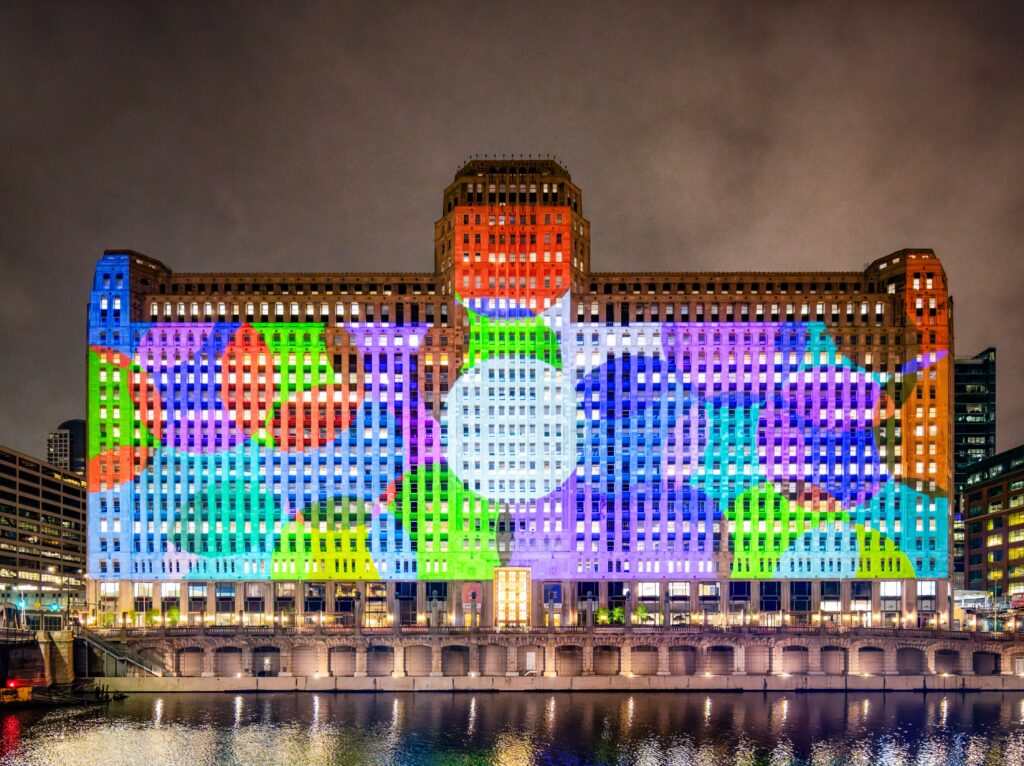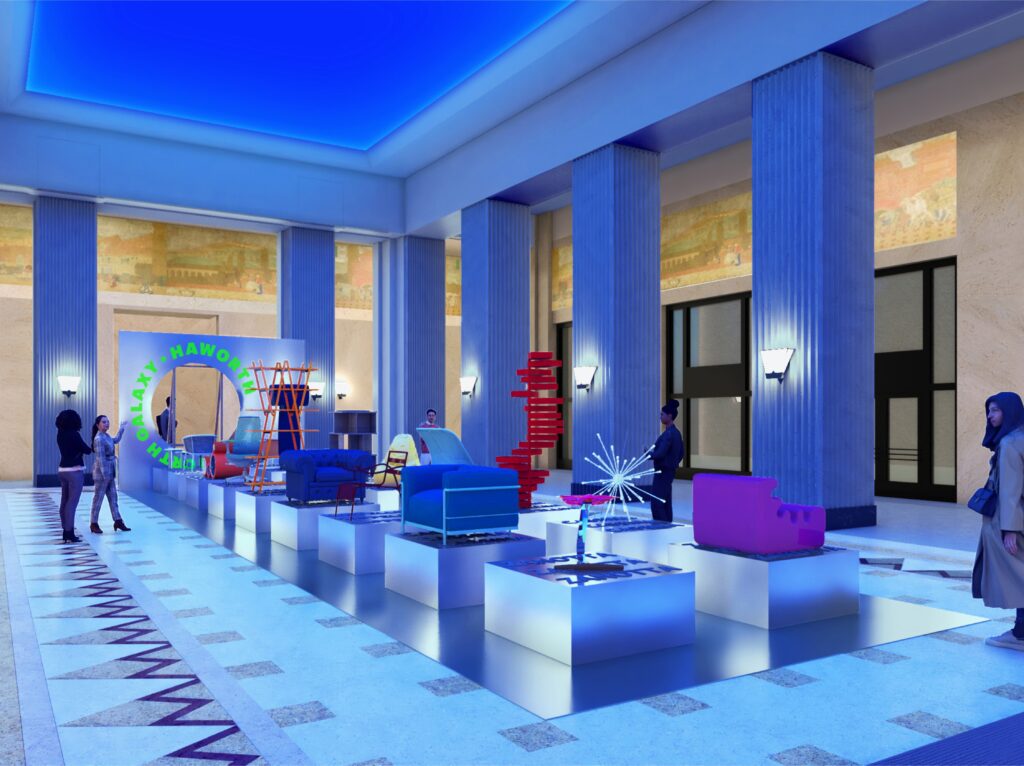Education for healthcare FMs and designers at NeoCon 2025 ranges from therapeutic settings to clinic design to holistic approaches

May 12, 2025—NeoCon 2025 will offer on-site educational programming, presented by world-class experts on the latest strategies, emerging technologies, sustainable practices, and compelling concepts from leading associations, universities, architecture and design firms, manufacturers, and media outlets. In addition, there will be over 60 virtual CEU seminars addressing relevant and pressing topics. You can register for and watch the sessions on-demand June 9 through October 1, 2025.
All NeoCon CEU Sessions, on-site and virtual, are $50 each or $45 each with a purchase of 5 or more sessions. Virtual CEUs will be available June 9 through October 1, via the NeoCon CEU Hub. You can continue to register for additional CEUs through October 1.
Each session is 60 minutes. Sessions are approved for 1 CEU for Designers and 1 LU for Architects. Certificates are available post session after completing a 10-question quiz.
Healthcare topics are addressed in these NeoCon virtual sessions in these tracks: Healthcare/Facilities Management/Wellness:
Communication and Innovation in Complex Facility Projects: Discover how the University of Texas MD Anderson’s Cancer Center, one of the world’s largest and most respected centers devoted exclusively to cancer patient care, research, education and prevention, planned for future growth and expansion. This panel discusses the complex nature required to move 1,400 employees to pave the way for urgent expansion projects. Discussion will focus on mastering change management, stakeholder engagement, and effective communication strategies in a dynamic, complex project environment. Learn to recognize when processes are ineffective, when to pivot, and how to leverage tools for rapid collaboration and clear communication. This panel will share insights into balancing multiple project constraints–such as fast-track scheduling, multiple end-user group integration, high level decision-making, and furniture reuse–transforming these challenges into a catalyst for innovation, revealing sustainability strategies hidden within the project’s core objectives.
Designing Therapeutic Environments for Eating Disorders: This presentation demonstrates an evidence-based integrated design approach in transforming a 1988 adult psychiatric unit into an eating disorder treatment center that reinforces the methods of Laureate Psychiatric Clinic and Hospital in Tulsa, OK. This facility requiring reimagining traditional behavioral health spaces to address the unique challenges of eating disorders treatment. The renovation showcases specialized environments balancing clinical necessity with hospitality-inspired design, creating spaces that promote healing while maintaining essential safety protocols. Unlike typical behavioral health units, this facility emphasizes a spa-like atmosphere while accommodating extended stays. The project exemplifies how thoughtful design can support complex treatment protocols while creating dignified, healing spaces that aid in successful recovery and reintegration.

Empathy Meets Innovation: Transforming Homes into Care Hubs: With an aging population and rising chronic diseases, homes are becoming primary care hubs. The US Food and Drug Administration (FDA) recognized the challenge of ensuring safe and reliable care in homes. Current home health technologies offer fragmented solutions. By integrating medical, digital and physical infrastructure, homes can better support health. FDAs Home as a Health Care Hub initiative, facilitated by HKS, reimagines the home as a nexus of health and wellness. The team leverages evidence and stakeholder engagement to understand needs of people with diabetes. At the core of this initiative is the Idea Lab, that includes discovery documents synthesizing clinical, technology and housing insights, along with empathy-building tools, and Lilypad(TM) Virtual Reality platform to illuminate the lived experiences of those with diabetes. This work emphasizes collaboration among designers, technology innovators and health providers to create homes for seamless, integrated experiences.
Evidence Based Design in Healthcare: The “Evidence Based Design in Healthcare” CEU is about several areas of information coming together to make the best-informed decision for your facility. It takes into account evidence based medicine, research informed manufacturing and data driven decision making into a complete healthcare strategy for your upcoming project. One must make decisions using current best evidence and past projects to inform and influence the upcoming space. There are 4 levels of Evidence Based Practice discussed (1- Best Practice Model, 2-Hypothesis and Measurements, 3- Presentations and Magazine articles, 4-Peer Reviewed Scholarly Publication) and an easy to follow checklist on understanding these levels of using EBD for your facility. Not all levels are required for every project. Very few are at a Level 4 but most fit into Level 2. Knowing if you are actually creating a Healing environment is done by measuring & interpreting the results. This is what is Evidence Based Design in Healthcare is all about.
From Underutilized to Unmatched: High-Impact Clinic Design: Can strategic planning and innovative design transform constrained spaces into high-performing, world-class healthcare environments? In this session, you’ll learn how UW Health and Flad Architects turned a compact, underutilized hospital space into a high-impact home for the renowned Pleasant T. Rowland Transplant Clinic. By repurposing 16,000 sf of space, consolidating services, enhancing patient experiences, and fostering operational efficiency, this project demonstrates the power of thoughtful design and planning. The presentation highlights a data-driven, collaborative process that integrates phased planning and aligns stakeholder priorities with strategic goals to create flexible spaces that adapt to growth, integrate technology, and optimize resources. Attendees will gain practical, inspiring insights into how robust data gathering and analytical tools, combined with nimble planning, can align spaces with evolving needs while unlocking opportunities for future innovation.
Benchmarking Healthy Materials: An overview of an internal benchmarking process built to comply with AIA Material Pledge Standards and the Common Material Framework, this course will highlight ways that Stantec has been extracting data from Revit projects to understand how healthy material standards are being used throughout the portfolio of projects across various markets. This presentation will provide a high-level overview of the internal process developed to show how firms can document compliant materials being used and how we can help supplement other tools in the industry to capture interior finish specifications with our process.
Get to the Point: Safety, Cleaning and Materiality: What does “safety” mean to your team related to product selection? Besides its importance in planning, design and construction, safety is a crucial element in every product’s service life: once specified and in place in your project, how long do you (and the C-suite) expect it hold up? 7 years? 10 years? What happens if it only lasts 6 months because it was improperly cleaned or maintained. Who pays for the replacement? What happens if products are trashed sooner because they became an infection control hazard? Join this expert panel as they focus on the safety aspects of healthcare materials and cleaning/disinfecting protocols that should be understood during the selection process to help increase the service-life of each. View the overlooked connection between safety and performance as they relate to durability, sustainability, infection prevention, testing, comfort, aesthetics and overall service-life. Learn how help prevent premature failures.
Top 10 Keys to Holistic Healthcare Design: Healthcare Design is complex, technical and challenging. Yet, it is fascinating, human-centered, research-based, and ever changing. Hospitals are buildings with multiple needs and uses where the opportunities to enhance the user’s experience through holistic design are endless. As an industry that actively uses research to improve guidelines, designers are continuously challenged to excel and innovate not only on their final product, but also through their process. So, what does the concept of “Holistic Healthcare Design” really mean? The list below highlights Ten keys to enhance the process and elevate design: 1. Visioning – Finding Purpose 2. Decision- Making 3. Collaborative Design Integration 4. The power of Community Engagement 5. Safety – the undercurrent of every decision 6. Surviving cost analysis 7. Building consensus using Design Tools 8. Empowering of Wayfinding 9. The Magic of FF&E 10. Flexibility & Adaptability – the only thing constant is change.


